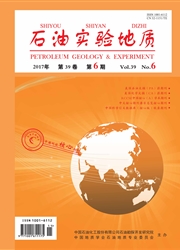

 中文摘要:
中文摘要:
塔里木盆地塔中地区奥陶系碳酸盐岩发育多种形式的岩溶作用,其中深部及热液埋藏溶蚀是形成有利储层的重要机制之一。钻井岩心、录井等分析化验资料以及宏观地质背景分析表明,塔中地区奥陶系碳酸盐岩主要发育4期埋藏溶蚀,I,Ⅱ期溶蚀孔洞基本已被充填,Ⅲ期残留孔隙和Ⅳ期溶蚀孔洞为现今储层的有效储集空间。埋藏溶蚀作用发生的流体介质主要为有机质演化过程中形成的有机酸和二氧化碳,硫化氢可能对晚期储层形成有较大贡献。通过分析前人研究成果,认为岩浆期后热液溶蚀对本区奥陶系储层的改造作用有效,具体的影响和评价还有待进一步深入研究。
 英文摘要:
英文摘要:
Various types of karstification effects have developed in the Ordovician carbonate reservoirs of the central Tarim Basin. The deep burial and hydrothermal Karstification effects play important roles in favorable reservoir formation. Analyses of well cores, logging data and geological background have indicated that, there are mainly 4 stages of burial Karstification effects in the area. The pores in stages Ⅰ and Ⅱ have been filled. The residual pores in stage Ⅲand the corrosion pores in stage Ⅳ work as effective reservoir space for present reservoirs. The main fluid medium include organic acid and CO2 generated during organic evolution. H2S may contribute to late reservoir formation. Hydrothermal Karstification is effective to Ordovieian reservoir transformation. The influence and evaluation still require further research.
 同期刊论文项目
同期刊论文项目
 同项目期刊论文
同项目期刊论文
 期刊信息
期刊信息
